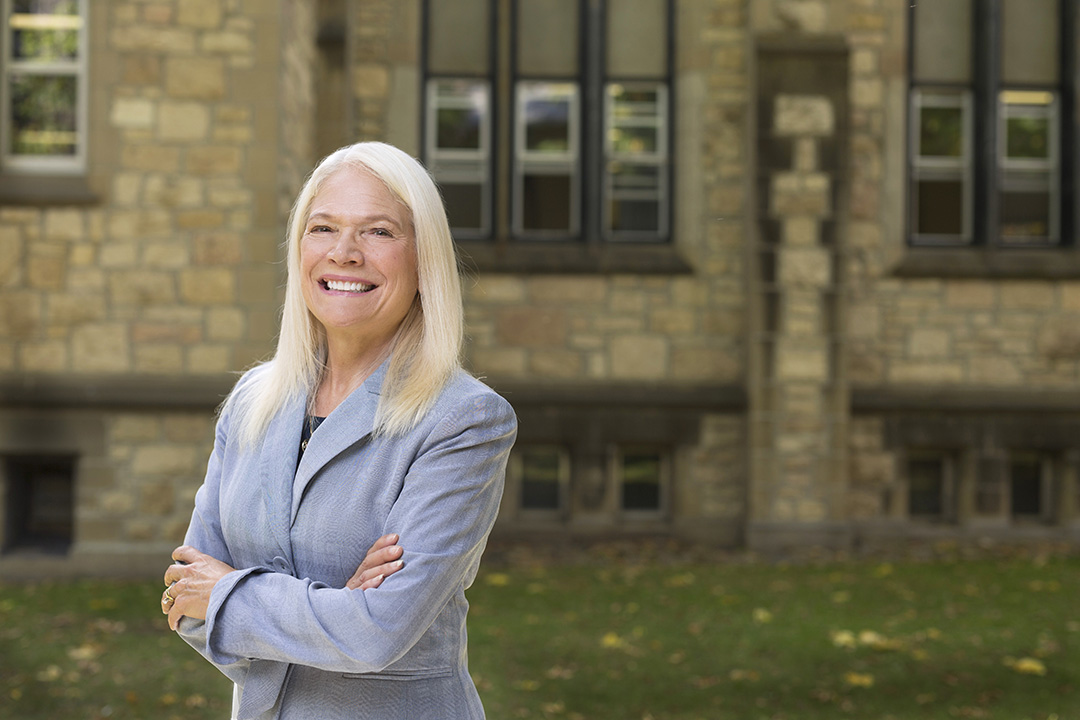
The discovery process: Becoming the university that the world needs
With the updated Mission, Vision and Values statement establishing its path, along with the framework from the existing three integrated plans, the new university plan began to take shape in 2016.
By Leslie-Ann Schlosser“Those first three integrated plans plus the Mission, Vision and Values allowed us to look at a university plan that was outwardly facing and focused not on what we want to be as a university, but on what the world needs us to be as a university,” said Debra Pozega Osburn, vice-president of University Relations at the U of S.
From those building blocks, the plan underwent extensive consultation. Pozega Osburn calls this phase the discovery process. Community groups, University Council, leadership teams, Indigenous leaders, students and alumni, among many others, were given the opportunity to provide insight, knowledge and feedback on what they thought the university plan should be.
“We wanted to bring the community into the formation of this plan in some really powerful ways,” said Pozega Osburn, who maintained that listening was the key factor in building the guiding commitments of the plan. “As we were prompting these conversations and listening, the three commitments developed. These are words that were brought forward when talking about the plan and these are the major ideas that we heard over and over again.”
The three commitments of the university plan were then framed from the conversation resulting in Courageous Curiosity, Boundless Collaboration, and Inspired Communities. From each of these commitments, goals were built, guideposts were developed and aspirations were established. All of the layers were built based on the input from the discovery process.
“What people are telling us and what we heard through this whole discovery process is that people expect great things of us. They think that there are things that we can accomplish, areas in which we can lead, areas in which we can collaborate and partner, things we can do to inspire that will make a big difference in the world,” said Pozega Osburn.
Pozega Osburn said U of S alumni played a valuable role by bringing their expertise to the table during the discovery process. Alumni can act as ambassadors, she said, and she is excited for the group’s involvement as the university gets to work moving the plan forward.
“It became clear that alumni want to be involved in our university in new ways, in mutually beneficial ways and in productive ways. That is so important for a university to succeed. It’s a gift to us that our alumni want to be a part of our future,” said Pozega Osburn. “Nobody can tell our story the way our alumni can tell our story.”
Debra Pozega Osburn on the three commitments of the University Plan
Courageous Curiosity:
“We’re not afraid to ask the questions that need to be asked. We’re not afraid to confront the things that need to be confronted. You can do that at a big research university, and at the University of Saskatchewan you can do it in a powerful way because we have our deep roots in Saskatchewan and we have a certain set of values.”
Boundless Collaboration:
“We collaborate and we forge partnerships no matter what we’re doing. Boundless means exactly what it says; there is no limit to our ability and willingness to collaborate.”
Inspired Communities:
“The more we can work with and for our communities to inspire the world, the more we can work with and for our communities to address society’s needs for the next generation.”
Article re-posted on .
View original article.

